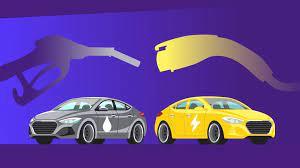
Charging Electric Cars
The auto industry is experiencing rapid changes. As more governments around the globe start to set deadlines on the sales of gasoline-powered vehicles, the popularity of electric vehicles is becoming more and more widely welcomed. People are talking about the possibility of switching from gas to electricity, but what does it mean?
The problem is that there are three kinds of electric vehicles readily available from OEMs today, including the hybrid electric vehicle (HEVs) as well as plug-in hybrid electric vehicles (PHEVs) and BEVs, or battery-electric vehicles (BEVs). In this blog, we'll look at these three different kinds of electric cars (EV) and discuss the differences between them and how they are different from each other.
Hybrid Car
Hybrid electric vehicles or HEVs were the very first electric vehicles for the mass market that were created. It was Toyota who developed the technology and then sold the vehicle to us under their top-selling Prius. The Prius was introduced to Japan at the time of 1997 and was shipped to the US in 2000, for the model year 2001. For more than 20 years hybrids have allowed people to achieve the most efficient of both when it comes to deciding between electric and gasoline-powered engines.
Hybrid vehicles are the result of combining traditional gasoline power and battery electric power. When driving at a slower speed the hybrid vehicle uses an electric motor. Check out the price of the Toyota Corolla 2003 price in Nigeria. It runs with electricity until it reaches a speed where gasoline engines kick into action and begin to take over. It will switch to an electric powertrain once you slow down, and so on.
It is believed that when you're driving through the city, and are faced with traffic jams and slow speeds it is possible to rely on electric power to cut down on the gas. When you hit the highway and need to get moving the throttle, the combustion engine comes in and provides super-efficient gasoline-powered driving. Many hybrid cars can get greater than 50 miles for each gallon.
It is powered by a battery that is low-capacity usually 1.3 to 1.7kWh It only offers the smallest amount of range that is electric-only. In the case of Toyota Prius, for instance, it can only cover 10 to 11 miles with electricity alone. The battery recharges itself through the engine every time it kicks in. One of the advantages of this is they do not require to be connected to charge. As you speed up and the engine kicks in, charge the battery's battery while you drive.
It is generally believed that hybrid cars were viewed as a type of "transitional" technology that would aid people in recognizing the advantages of electric vehicle technology. The main benefit of a hybrid vehicle is that it won't force people to deal with the issue of anxiety over range since the hybrid vehicle has the identical, if not more range than a conventional gasoline vehicle due to its incredible efficiency. It allows those who practice different types of driving to use a single vehicle that can handle all of it.
Plug-In Hybrid
We then move on to Plug-in hybrid cars (PHEVs) that are a development of HEVs. They function in similar ways to regular HEVs, but the main difference is that to charge them it is necessary to connect them to the charging station or the electrical outlet in your home. The batteries of PHEVs are larger than HEVs, generally between 8kWH and 18 kWh. They aren't rechargeable with the combustion engine typically which is why they are charged the same way as you charge the battery of a vehicle that is powered by electricity.
The bigger battery capacity makes PHEVs an impressive range of electricity only. They usually provide 20 to 50 miles of electric range dependent on the manufacturer and model. They are perfect for long commutes, where people can travel for a long time or even a full day of school runs, etc. with their PHEVs without relying on gas at all.
The PHEV is a good alternative for those who don't appreciate the limited electric power that the HEV offers, however who aren't yet ready to fully embrace electricity. Since the batteries are smaller than the average PHEV, they can be charged more quickly, and even depend upon "level 1" charging solutions such as a cable from the factory to charge the garage overnight, while plugging into the dryer's outlet. It is not necessary to install extra wall box chargers or employ DC quick chargers.
In 2022's model year, we already have some exciting models being developed by Kia, namely South Korean auto giant Kia. Their brand new 2022 Kia Sorento PHEV will feature a mix of plug-in charging and self-charging capabilities. The engine is capable of charging the battery at a rate of 70-80 percent. This is extremely useful as it makes the PHEV more appealing to the majority of buyers.
Conclusion: Learn the Differences, Make the Right Choice
The primary conclusion to be drawn from this article is that no one type of EV is superior to others, since its advantages and disadvantages are beneficial to individuals differently. Electric vehicles operate differently and are beneficial to various situations, therefore purchasers mustn't assume that one is better than the other. It's best to take time to study the difference between them and how each will benefit them.
Another benefit that comes from this is that we'll continue to be spoiled for choice when cars are converted to electricity. Many were concerned that electric vehicles were going to be less boring or boring than gasoline vehicles, However, they've proved wrong and the OEMs are only getting their feet wet.
Also read about:
The Benefits of Installing Hurricane Windows in Your Home
Can Twin Flames Be Friends During Separation
Some Basics You Need to Know About Hammer Drills







